How can a 167-year-old brand come across as modern and relevant to today’s audiences and decision makers? We joined American Express to find out.
(Ed: the below blog was written by our VP of Sales, Kevin Lowe. Check out our 2018 guide to brand newsrooms here.)
The NewsWhip team were in attendance at Social Media Week NYC this past week. One of the big highlights so far (outside of the interview with Reverent Run!) was the insight that 167-year-old American Express gave into its wildly successful strategy to engage with the B2B audience.
Debbie Grishman, VP of Global Digital Brand, and Chris Marino, Director of Global Social Media Strategy, shared the ten principles that their team applied to this successful campaign. The goal was to not just be another credit card company but to become a trusted advisor to these business decision makers.
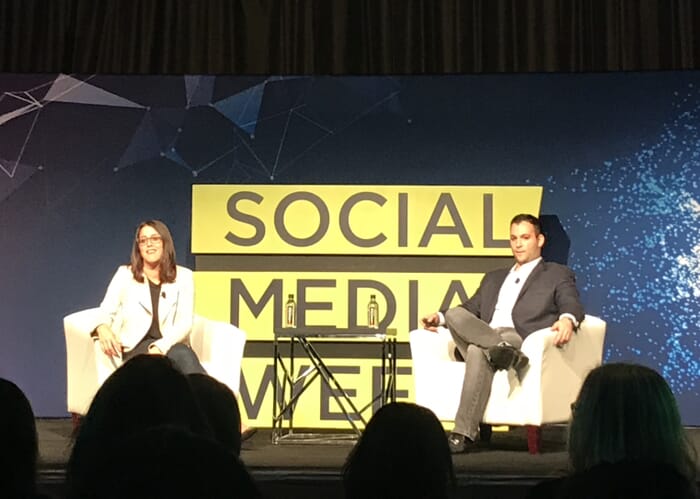
The question they asked themselves was “How do we show up differently?” Social Media played a key role in reframing what it meant to engage the B2B audience.
Chris said that “empathy became really important, really connecting with your audience, and having a conversation with your audience”.
So how did Amex “show up differently”? The brand built a strategy based on the following ten principles that they applied throughout the 18-month process from research to activation. Chris took us through each of those principles in turn.
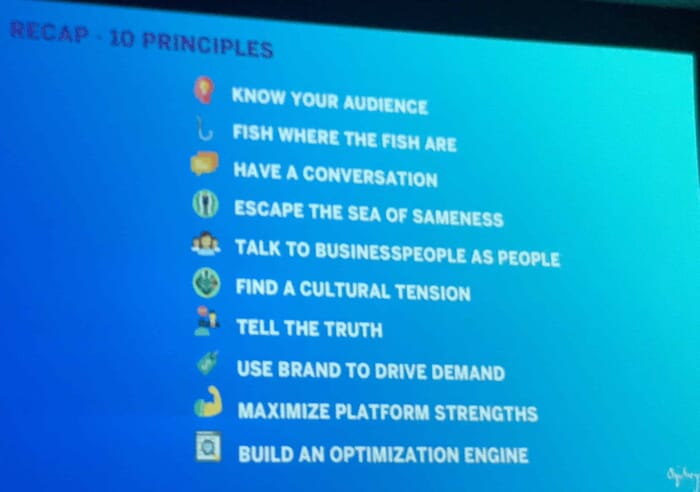
1. Know your audience
The brand was clear from the outset that it wanted to target business decision makers and really understand their challenges. Amex analyzed search data to figure out the questions these people were asking and where Amex could potentially add value.
“Make sure you are not going on your own opinions but that you are using data to inform direction,” said Chris.
2. Fish where the fish are
Where was Amex’s audience spending time?
Quite surprisingly, the brand found that 69 percent of business decision makers were using social media at least three times a day, so social became core to the strategy. Even more surprising, a Facebook B2B study stated that 78 percent of business decision makers are using Facebook and Instagram on a daily basis.
3. Have conversations with your audience
To have meaningful conversations with social users, the Amex team aimed for a mix of content focused on business “truths” and practical learnings.
(This partnered video with Junkee asked the age-old question of who pays on a first date)
One of the truths the brand unearthed was that “jargon was an inhibitor” for this audience. Amex decided to tap into jargon as a conversation and build tools to get around challenges such as this.
4. Escape the sea of sameness – How to “stop your thumb and get attention”
The team was always aware of the competition for attention on social and the need to stick to their mission of “showing up differently”. To enable this new approach, the brand had to get buy-in across the organization, and bring legal and compliance along with them.
There was already an appetite to approach things differently — keeping the customer at the core of what you do is a core principle that comes right from the top at Amex. When there was internal hesitation at any stage, the team would articulate the risks of not moving where the customers want them.
The research data showed that customers clearly wanted the brand to be “fun and friendly”.
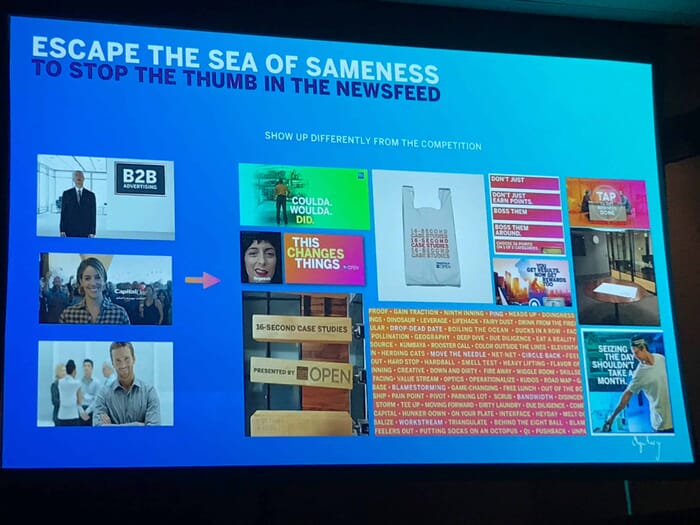
5. Talking to business people as people
It sounds obvious to us, but Amex found that unnecessary jargon was clouding the information that was out there. Instead, the team adopted the approach of “why don’t we just talk about this as “money?” rather than financial services.
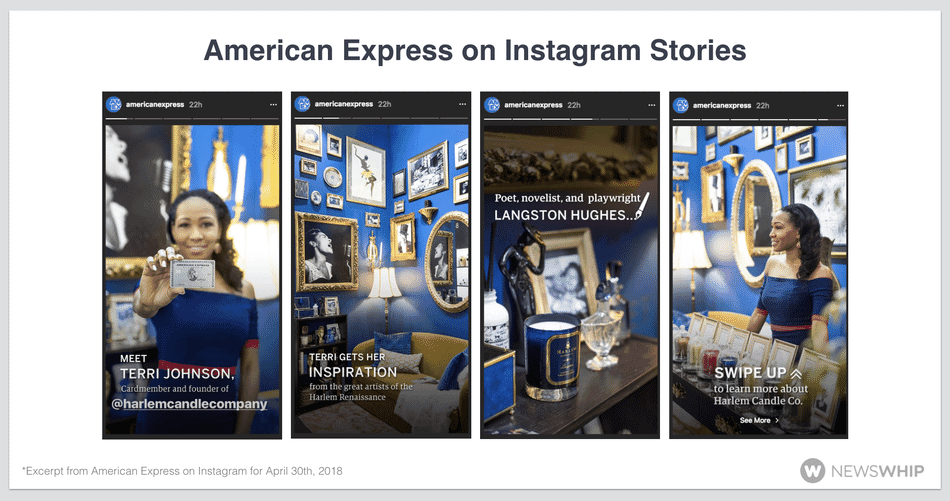
6. Finding a cultural tension
This meant tapping into something that the audience faces in their everyday lives.
The team wanted to embody the ideals they were sharing, so they created a happy hour jargon jar at the office that team members had to contribute to every time they overcomplicated something with unnecessary jargon.
Amex was able to own the jargon conversation on Linkedin through their understanding of this inhibitor.
https://www.youtube.com/watch?time_continue=5&v=ZIyjVntfyRc
7. Tell the truth
This is where utility content came in. The team prompted their audience to the ask the questions we tend to avoid like “Are meetings actually productive?” and “How much time do we spend in meetings?”. They provided practical ways to get around unproductive meetings.
8. Use brand to drive demand
To reach audiences in genuine and compelling ways, the team taught themselves to ask “how can we have authentic conversations, that also drive people through the funnel to the desired outcome?”.
9. Maximise platform strengths
Amex highlighted the concerted effort that was made to be true to each platform and users’ consumption behaviors.
“You can’t just copy and paste” content from Linkedin and expect it to resonate on Facebook, said Debbie. “It’s really important you build and create for each platform… build content that leans into the nuances and differences” that each platform provides.
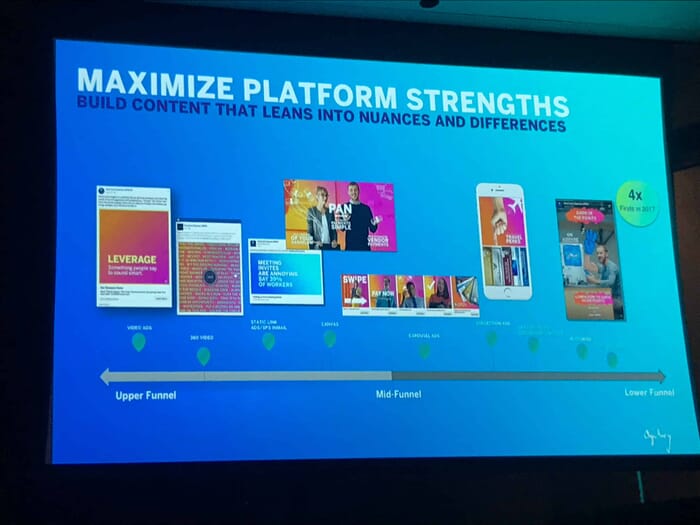
10. Build an optimization engine
The brand continues to test and learn whether the team’s efforts are reaching the audience in an effective way.
Which ideas are working best? Which platforms are working best? Which formats? Which messages? Which CTAs? Measuring success depends on the platform and the goals aligned with that platform.
For example, on LinkedIn, the team measured CTR (to Open Forum) and engagement rates, while on Instagram, they measured video completion and overall engagement.
“From a measurement perspective we were very clear on what we wanted to achieve,” said Chris, “The goal was to drive reappraisal and consideration. It is very important to have alignment on what you want to achieve”.
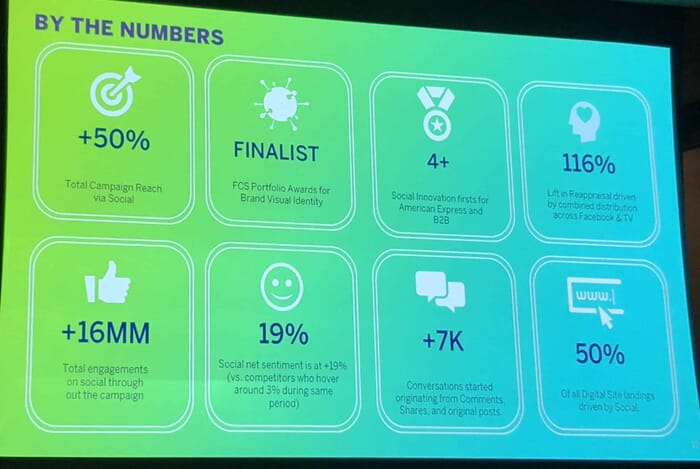
As we can see from Amex’s metrics above, this campaign to connect with business decision makers on a human, value-adding level was hugely successful.
This was a very focused strategy where Debbie, Chris, and their team had to take calculated risks to “show up differently” and give audiences a genuine reason to engage with the brand.
We look forward to following this team as they continue to innovate a 167-year-old brand and build meaningful connections with their audience.
How can brands build a community that seeks out and shares their content? Check out our 2018 brand newsroom guide.











